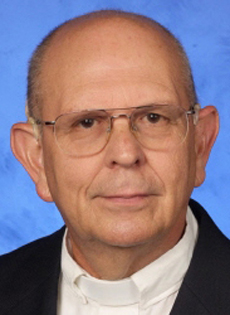
October, Month of the Rosary
Monday, October 6, 2025
*Fr. Eduardo Barrios, SJ
On February 2, 1974, about ten years after the Second Vatican Council, Pope Paul VI published the apostolic exhortation Marialis Cultus, a comprehensive treatise on the importance of the Virgin Mary in the life and devotion of the Church.
That Pope, now St. Paul VI, strongly recommended praying the Holy Rosary.
This Marian practice began to take shape in the early 13th century under the guidance of St. Dominic de Guzmán, founder of the Order of Preachers, known as the Dominican Order, which has many branches. The rosary underwent a certain evolution over time. Its current form dates back to the 16th century, when Pope St. Pius V, a Dominican, gave it its definitive form in 1569. Since then, the rosary has not lost, but rather increased, its acceptance among the Catholic faithful. All the saints of the last centuries have prayed the Holy Rosary. Pope St. John Paul II said: “The rosary is my favorite prayer.”
Paul VI described the rosary as a summary of the Gospel message, since the Blessed Virgin teaches us to listen to the Word of God and to embody it every day. Just as she “kept all these things in her heart” (Luke 2:19,51), we contemplate the mysteries of Christ's life, which now amount to 20 since Pope John Paul II introduced the Luminous Mysteries on October 16, 2002; these are mysteries about the public life of Jesus, and are prayed on Thursdays. St. John Henry Newman said, “The Rosary is the Creed made prayer.”
Although every day is a Marian day, as evidenced by the mention of Mary in every Mass, there is one day in the week that is particularly Marian, and that is Saturday. The first Saturday of each month is a day especially dedicated to the Virgin Mary. Although all 12 months are Marian months, there are two that emphasize the devotion to the Blessed Mother: May, “the month of flowers,” and October, the Month of the Holy Rosary.
On October 7, there is a special Marian Mass, that of Our Lady of the Rosary. The date comes from the decisive victory of the Catholic army in the Battle of Lepanto in 1571.
The rosary is not an exclusively Marian exercise. It is a Trinitarian prayer, because it begins with the sign of the cross, and the Trinitarian doxology, “Glory be to the Father, and to the Son, and to the Holy Spirit,” is recited after each mystery. In addition, the Lord's Prayer is recited no less than five times.
Let us not lose sight of the fact that the first part of the Hail Mary, which is prayed up to 50 times in the rosary, is taken from the Bible. It quotes the angel's greeting and Elizabeth's greeting (Luke 1:28 and 1:42). The second part of the Hail Mary was added with ecclesiastical approval in 1483.
There are many inexpensive printed aids available that provide guidance for praying the rosary. Let us take advantage of the month of October to pray this most exalted prayer with greater fervor.


Comments from readers